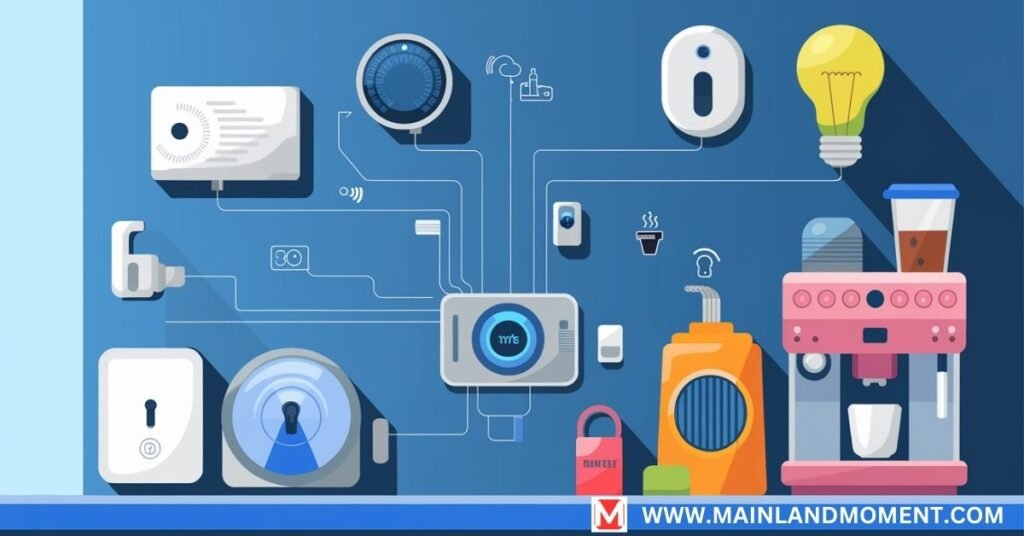Hair Technology 2025: Latest Innovations Transforming Hair Care & Growth
Imagine hair that repairs itself, shrugs off damage, and grows stronger with every wash. Sounds like a dream, right? Well, hair technology is turning that dream into reality. From Nano Oil molecules to futuristic gene tweaks, science is revolutionizing how we care for our locks. Whether you’re fighting frizz, thinning strands, or just want a glossy mane, these advancements tackle it all. Curious? Let’s explore how hair tech is changing the game and why it matters to you. Revolutionizing Hair Care: Welcome to the Future You step out of the shower, and your hair feels invincible. Hair technology blends biology, chemistry, and cutting-edge innovation to make that happen. It’s not just about slapping on a conditioner anymore. Today’s solutions like Build Lipid Layer Technology dive deep to fix damaged lipid bonds and shield your strands. Think of it as upgrading from a paper umbrella to a steel fortress. From hair restoration solutions to scalp protection, this is hair care on steroids. Ready to see what’s under the hood? The Hair Strand Breakdown: What’s Really Going On? Your hair isn’t just a pretty accessory, it’s a complex structure. At its core, you’ve got the cuticle (the outer shield), the cortex (the strength layer), and the hair lipid structure tying it all together. Lipids are like the glue in this setup. They hold keratin proteins tight and form a protective hair barrier against heat, chemicals, and UV rays. Strip those lipids away with harsh shampoos or styling, and your hair turns brittle, think cracked pavement after a storm. Hair tech steps in to patch that up, restoring structural integrity fast. READ ALSO: Get Free Technology Gadgets Online: Legit Ways to Win, Test & Earn 2025 Here’s a quick rundown of hair’s layers: Cuticle: Overlapping scales that guard the inside. Cortex: Packed with keratin for strength and elasticity. Lipid Layer: Oils and fats that lock in moisture and fend off damage. Lose that lipid layer, and you’re left with dull, weak strands. But don’t worry, science has your back. Nano Oil Power: Tiny Molecules$(‘. Massive Impact Ever heard of Nano Oil molecules? These microscopic powerhouses sneak into your hair like tiny repair crews. Unlike regular oils that sit on the surface, nanotechnology delivers deep penetration. These particles are smaller than a human cell, mimic your hair’s natural lipid molecules. They slip into cracks, seal damaged hair, and boost elasticity. It’s like pouring concrete into a crumbling wall. Products with Nano Oil don’t just coat, they rebuild from within, leaving you with silkier, tougher strands. That’s the magic of deep nourishment results you can feel. Lipid Layer Reboot: Restoring Your Hair’s Shield Why does your hair feel amazing one day and fragile the next? Blame the lipid barrier. Daily wear, think blow-drying, pollution, or hard water, strips it away. Enter Build Lipid Layer Technology, a US Patent technology that rebuilds this shield. It uses lipid repair formulas to lock in moisture retention and strengthen strands. Studies show users see 30% less breakage after one use. For example, a 2023 trial by hair care giant Kerastase found their lipid-infused serum cut split ends by half in two weeks. That’s a 髪 restoration solution you can see in the mirror. READ ALSO: Domotic Technology 2025: Smart Home Automation Trends & Future Innovations Follicle Fortress: Protecting the Roots of Growth Healthy hair starts at the root, your hair follicles and scalp. Damage here means weak growth or worse, hair loss. Hair tech fortifies this zone with Nano Oil and antioxidants. These goodies shield follicles from inflammation and oxidizing free radicals, nasty molecules that age your scalp fast. A strong scalp lipid barrier keeps moisture in and threats out. Think of it as a bouncer for your roots, ensuring only the good stuff gets through. Stronger follicles? That’s the key to hair growth and root strengthening. Here’s what attacks your scalp daily: UV rays: Break down lipids and weaken follicles. Pollution: Clogs pores and ramps up oxidative stress. Heat: Fries the scalp moisture layer. Tech fights back with scalp hydration and nourishment. Antioxidants Unleashed: Fighting Hair Loss at the Source Hair loss isn’t just about genes, environmental hair damage plays a huge role. Meet oxidative stress, caused by ROS (reactive oxygen species). These rogue molecules, fueled by pollution effects or styling damage, attack follicles and trigger thinning hair. Hair tech counters with antioxidant properties. Vitamin E, green tea extracts, and other warriors neutralize ROS, offering hair loss prevention. A 2024 study in the Journal of Cosmetic Dermatology found antioxidant serums cut hair fall by 22% in three months. That’s follicle protection in action. “Antioxidants are like firefighters for your scalp putting out the blaze before it spreads.” Dr. Emily Carter, Dermatologist Beyond Repair: Tech That Grows Hair Back What if you could turn sparse patches into lush growth? Hair technology isn’t stopping at repair, it’s pushing into regrowth. Nanostructured lipid carriers (NLCs) deliver hair treatment heavyweights like minoxidil or peptides straight to follicles. Why’s that cool? These carriers boost absorption by 40% compared to old-school lotions, per a 2023 study in Pharmaceutics. Pair them with microneedling tiny rollers that wake up dormant roots and you’ve got a strengthening formula for revitalization. Users report thicker hair in as little as six weeks. READ ALSO: Integrate Technology With Traditional Farming: A Modern Farmer’s Guide Everyday Wins: How Hair Tech Fits Your Routine High-tech doesn’t mean high-maintenance. These goodies slide right into your daily grind. Shampoos with Nano Oil molecules cleanse without stripping. Conditioners rebuild the lipid defense for moisture lock. Serums packed with antioxidants tackle pollution damage. Want a pro tip? Massage your scalp for two minutes while applying blood flow amps up scalp care and deep restoration. Whether you flat-iron daily or let it air-dry, there’s a protective coating to keep your hair thriving. Try these standouts: L’Oréal Elvive Extraordinary Oil: Nano-infused for cuticle protection. Briogeo Don’t Despair, Repair!: Lipid-rich for keratin
Hair Technology 2025: Latest Innovations Transforming Hair Care & Growth Read More »









